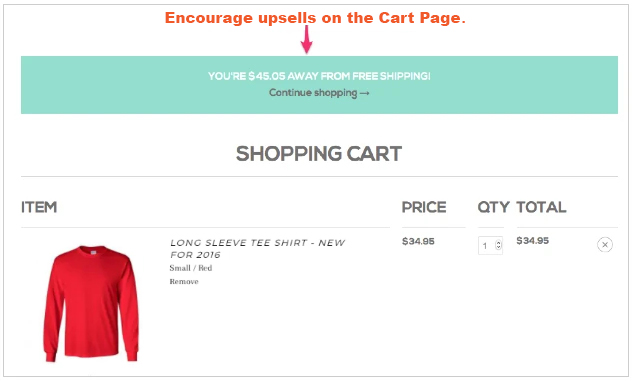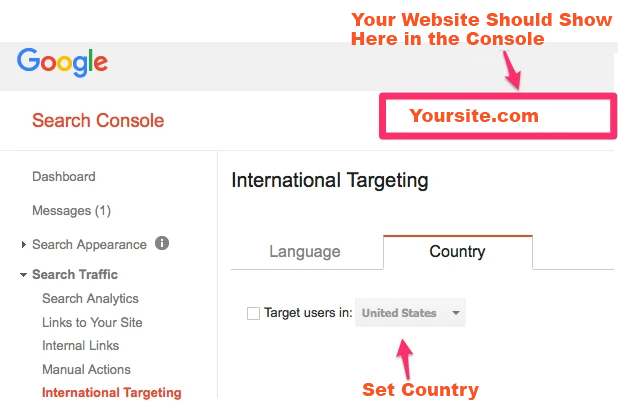Table Of Content
How to Expand Your Shopify Wholesale Store to Multiple Countries
1. QuickRead
Because of Shopify’s meteoric climb to the top of the e-commerce platform for developing businesses, more firms than ever before are looking to sell globally.
International firms that use Shopify range from fresh start-ups that have found success and scaled to existing businesses that want to take advantage of the benefits of Shopify Plus.
The idea of expanding internationally is exciting for many emerging brands. Despite the fact that we live in a globalized society, selling globally is still a complicated process. We’ll be there to help you get through it.
2. Why expand your store?
There are several advantages to expanding into multiple nations. Some are self-evident, while others may have slipped your mind.
2.1 Make more sales by expanding into new regions
The most important benefit of expansion is that it helps you to increase your sales by extending your client base. You’re restricting your store’s ability to access wider markets if you just sell in one country. Even if you provide worldwide shipping rates, the cost is sometimes unreasonably high for clients in other locations.
You instantly enable a large number of new customers to buy from you by extending into new regions—especially with local shipping and currency alternatives.
2.2 Accept payment in the local currency
While you can display many currencies in one store, you can only accept payments in the default currency.
Here’s the issue: Australians must pay in US dollars if they wish to shop at your American store. Almost without exception, your conversions will be less than if you could provide a local currency alternative.
The majority of people are unwilling to pay in a different currency. While you might make an exception for your ultimate favorite store, if you had to choose, you’d definitely choose a store that accepts your native currency. Paying in a foreign currency is inconvenient, especially for commercial transactions, and it is typically more expensive than paying in your own currency. Using the local currency might help you sell more.
2.3 Target local customers in advertising
Offering a local option in your advertising can set you up for more successful targeting whether you’re using Google Adwords or Facebook Ads to target certain demographics and generate traffic to your business.
Instead of wasting money by directing Canadian consumers to your US site, where they won’t be able to pay in their own currency (and hence be less likely to complete a transaction), you may send them straight to your Canadian store.
When done correctly, opening local businesses can help you get a better return on your investment from paid advertising. In a perfect world, you’d spend less and convert more.
2.4 Offer local shipping and logistics
Having local storefronts helps you to provide local consumers with specific delivery alternatives. Erstwilder, for example, added an announcement bar to the top of their website that displayed one set of shipping choices for Australian consumers and another set for foreign visitors.

A “You are $X away from Free Delivery” prompt sweetens the offer by serving as a second reminder to add another product to the cart in order to qualify for free shipping.
2.5 More control over your products
Would you like to sell items to clients in one country but not in another? You may control and manage the inventory as you like because you’ll effectively be managing individual shops that are linked together.
Let’s get started with the execution now that we’ve addressed the major reasons why you might want to open regional stores.
3. How do I set up multiple region shops?
Let’s have a look at the ultimate product as an example. If you stick to this strategy, you’ll have an Australian store, a European store, a United Kingdom store, and a USA / Global store that serves any nation that hasn’t been localized yet.
These shops each have their own inventory, currency, domain, and backend shop.
Of course, you may make two countries or ten—the choice is yours. So far, the most successful businesses have had two to six localized locations. You want to strike a balance between making the stores simple to run and increasing the total number of clients you have.
If you’ve been in business for a while, you’ve probably already figured out which nations could be excellent prospects for expansion. You may make use of data such as:
- Where do the majority of your consumers’ shop?
- Where you receive the majority of your enquiries (“Do you ship to nation X?”).
- Your abandoned cart data and Google Analytics can help you figure out which markets are underserved or have a high abandonment rate.
You have a foundation for your expansion if you already have one store. After that, you’ll need to follow the instructions below.
3.1 Get another Shopify account
Register with the region in the Shopify store name to keep things organized.
If your existing store is yourshopname.myshopify.com, for example, register yourshopname-ca.myshopify.com for Canada, yourshopname-au.myshopify.com for Australia, and so on.
This isn’t visible to customers, therefore it’s not important, but it will help keep your backend systems tidy.
3.2 Get another domain
There are two primary choices available here:
- Use a different domain.
- Make use of a sub-domain.
Using a different domain means having yourshop.com as your main site, yourshopusa.com as your US shop, yourshop.ca as your Canadian shop, and so on. This strategy can also work if the branding and other elements are properly set up.
If you use a subdomain, your main site will be yourshop.com, with ca.yourshop.com for Canada, au.yourshop.com for Australia, and so on.
The second option is preferable since it assures clients that the domain is a genuine part of your brand.
3.3 Duplicate your shop
There are a lot of stages to this, and it will take some time, but you don’t have to do them all at once. The following is a step-by-step procedure that may be repeated for numerous stores:
- Make a duplicate of your theme. Click “Export Theme” under Admin > Themes. After that, upload it to your new store.
- Duplicate your items. Click “Export,” then “Export All” under Admin > Products. This assumes you want your second site to display all of your items (otherwise you could choose to just duplicate a few products). Then, in your new store, import them.
- Make your price more regional. Depending on the location, you may want to adjust your price from your first shop to your second. You can modify the pricing on the second store once you’ve imported them in the previous step, either via the admin via the CSV if you have a lot of items.
- Make your global settings more specific. Check the General Settings (address, phone, etc. ), currency, and timezone on your new regional shop to make sure they’re set up the way you want them to be.
- All of your page content should be migrated. This does not have a shortcut or an export. Open the two sites side by side to migrate your page content from your old shop to your new regional shop.
- After that, go to Pages and work your way down the list, switching to HTML mode, copying and pasting into your new site. (Copying in HTML mode guarantees that the pages are identical.)
- To prevent being punished by Google after the migration, make sure to use hreflang, as explained by Google here. Hreflang is a tag that you can put to each page on your respective websites to notify Google that they’re linked (add it to theme.liquid in thesection to make sure it’s on every page). To put it another way, hreflang is necessary to ensure that Google recognizes that your Canadian website is for Canadian consumers and your US website is for US customers—without punishing you for having two sites that are identical. This is an important step that should not be skipped. Here’s a wonderful article that explains how to do it.
- Localize your page content and make sure your store’s links are entirely local. Localize the language (for example, from the US to UK spelling), update the contact information on your contact page, and double-check that all internal connections redirect to your new shop.
- If you had an internal link to your Contact Us page that pointed to yourshop.com/pages/contact-us, for example, you’d need to alter it when you copy it across so that it no longer points to your main site and instead points to your new contact page.
- As a general guideline, use relative URLs, which means eliminating the ‘main’ portion of your URL—for example, instead of yourshop.com/pages/contact-us, use /pages/contact-us.
- Reinstall and configure any Apps that were previously installed on your second store.
- Connect your payment gateways and Google Analytics to measure traffic.
3.4 Use an IP redirect to direct traffic
You may wish to utilize IP redirect software to identify your visitors’ location and route them to the appropriate shop now that you’ve gone global.
If a Canadian consumer visits your USA store, for example, you might display a message that says, “Looks like you’re in Canada.” Do you want to go to our Canada shop to view the prices in CAD and get a better deal on shipping?” You may either ask them via a popup or a top bar, or you can just direct them to your Canada shop.

3.5 Update Google’s Search Console
In Google’s Search Console, you should also select the country you wish to target. Please read Google’s advice here for additional details on how to accomplish this. It may appear complicated, but it should only take a few minutes to complete. You’ll see something similar to this, allowing you to select the nation.
3.6 Tie off any loose ends
This final stage will be determined by your specific circumstances. There may be some additional things to test and look at. Here are a few examples:
- If you’re using Facebook or Google Adwords to conduct sponsored advertisements, you may want to establish new tracking codes for each individual store and their associated advertising campaigns.
- Make a new Google Analytics profile for your website.
- Set up an email campaign to inform your consumers that you’ll be establishing a new regional location. It’s even better if you can be creative with it. Filter your email list for solely Canadian consumers and send them a customized campaign informing them that you’re opening a Canadian store just for them.
- If you’re utilizing a shipping or fulfillment service, talk to them about establishing a local presence and creating shipping costs in your new Shopify site to match.
- If you use customer support software like Zendesk, you’ll probably need to link it to your new business and set up some new rules so you can figure out where the client is from.
- Your new shop should be mostly set up after that. You may start directing traffic between the businesses and activate your advertising once your IP Redirects are activated.
4. Common Questions
Now, it is important to mention the possible drawbacks and consequences of expanding your website to multiple areas, as well as some typical concerns and queries.
4.1 Am I ready to expand?
Only you, based on your company position and comfort level, may make this decision, but here are some guidelines:
If any of the following apply to you, you may be ready to expand:
- You believe your business is well-established. This might indicate that your site is already providing you with a full-time income (or close to it). The idea is that you don’t want to overextend yourself with more administration and expenditures until you’re certain your business and product are sustainable. To put it another way, we believe that established businesses are a good match for this. Most of the companies we’ve worked with on expansions like these, for example, generate $10,000 or more per month in sales.
- Even if it’s only an experiment, you have enough income to justify running numerous businesses. If you’re living paycheck to paycheck and still establishing your concept, you might want to hold off on expanding until you’re more comfortable and have a buffer in your revenue stream. This helps you deal with the negative aspects of the growth, ensuring that your business doesn’t suffer if it doesn’t take off as soon as you had planned.
- Outside of your primary location, you’re seeing a lot of sales from a specific country. If your company is largely focused on the United States, but you’re seeing a lot of sales in Australia, it’s a strong sign that an Australian store might be worthwhile to create.
- In other places, you’re seeing clients who are really dedicated, loyal, and/or spend a lot of money. If Australian buyers are ready to pay high shipping charges (in US dollars) to get their hands on your products, it’s likely that if you offer them a local choice with lower delivery costs and local currency, they’ll be even more likely to buy.
If any of the following apply, you may not wish to expand:
- You’re still in the ‘proof of concept’ stage of your business, and you’re not sure if there’s a market need for your product.
- You won’t be able to handle several locations due to a lack of bandwidth. For example, if you already spend 60 hours per week on your own in your business, there’s a chance that opening a second store and having additional orders to process, customer inquiries to respond to, and so on will hurt your business. It’s best to hire some support or at the very least have a “success” plan in place for what will happen if the second store succeeds.
- You don’t have enough revenue to support a second store, and doing so would put you in a financial bind. The estimated costs are listed above; if they seem too high for your current situation, you might want to wait till your first store is more established.
4.2 Won’t it be a pain to manage?
You’ll be in charge of several inventories, client questions from different locations (and even different languages), and local content. There is clearly more administration involved, but if done correctly, the higher sales and profits can easily cover the cost of some more time and/or staff to help run your freshly resurrected micro-multinational.
4.3 Isn’t it more expensive?
You’ll also require several Shopify subscriptions, various versions of the apps you use, and more support time. The crucial question here is whether or not this will pay for itself.
Setting up a separate store
Take, for example, a hypothetical store on the Shopify plan that runs five Shopify Apps at $10 per month each, each with a profit of $25. This would imply that:
One store: $79 + (5 x $10) = $129 per month.
Two Stores: $129 x 2 = $258 per month
This store would be ahead if they merely sold six more things in a month. They’d almost certainly make a lot more money if the marketing was in place.
Of course, this is only an example—each store’s plan, necessary apps, charges, and product pricing are unique, and your results may vary. However, the example above should demonstrate how soon this can pay off as an investment.
4.4 What happens if it doesn’t work?
In our experience, if you persevere, the results are usually excellent—but, nonetheless, the risks are low because you’re only setting up a web infrastructure. If you expand to a new country and decide after two months that it isn’t working out, you may easily revert to your original strategy. Close the second store and concentrate on the first.
Overall, there will be more labor and a few higher costs—but it may also result in increased income and profit?
Given the modest risk (a few hundred dollars at most) and large potential payout, We feel many business owners would benefit from pursuing this technique. Overall, setting up and launching your website could take a few weeks.
Expanding your business online is a terrific method to swiftly test new markets and try out the different price and delivery choices, as well as gain access to new markets, languages, customer bases, and revenue sources.
5. Final Thoughts
In general, that’s all you need to know before launching a Shopify-based worldwide eCommerce business.
There are plenty of additional details and traps to avoid, as always. However, if you follow the above guidelines, you can create a roadmap for launching an international Shopify business.




